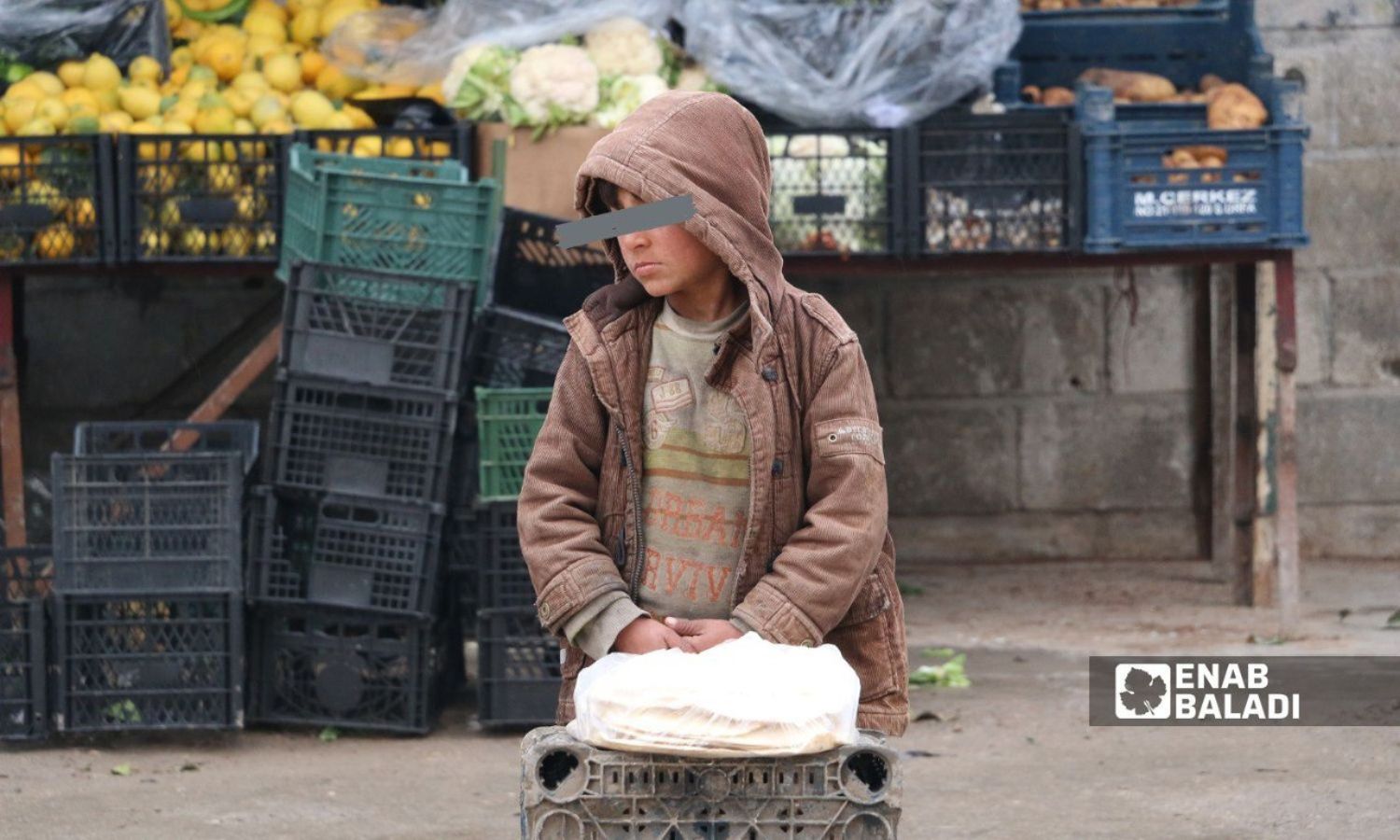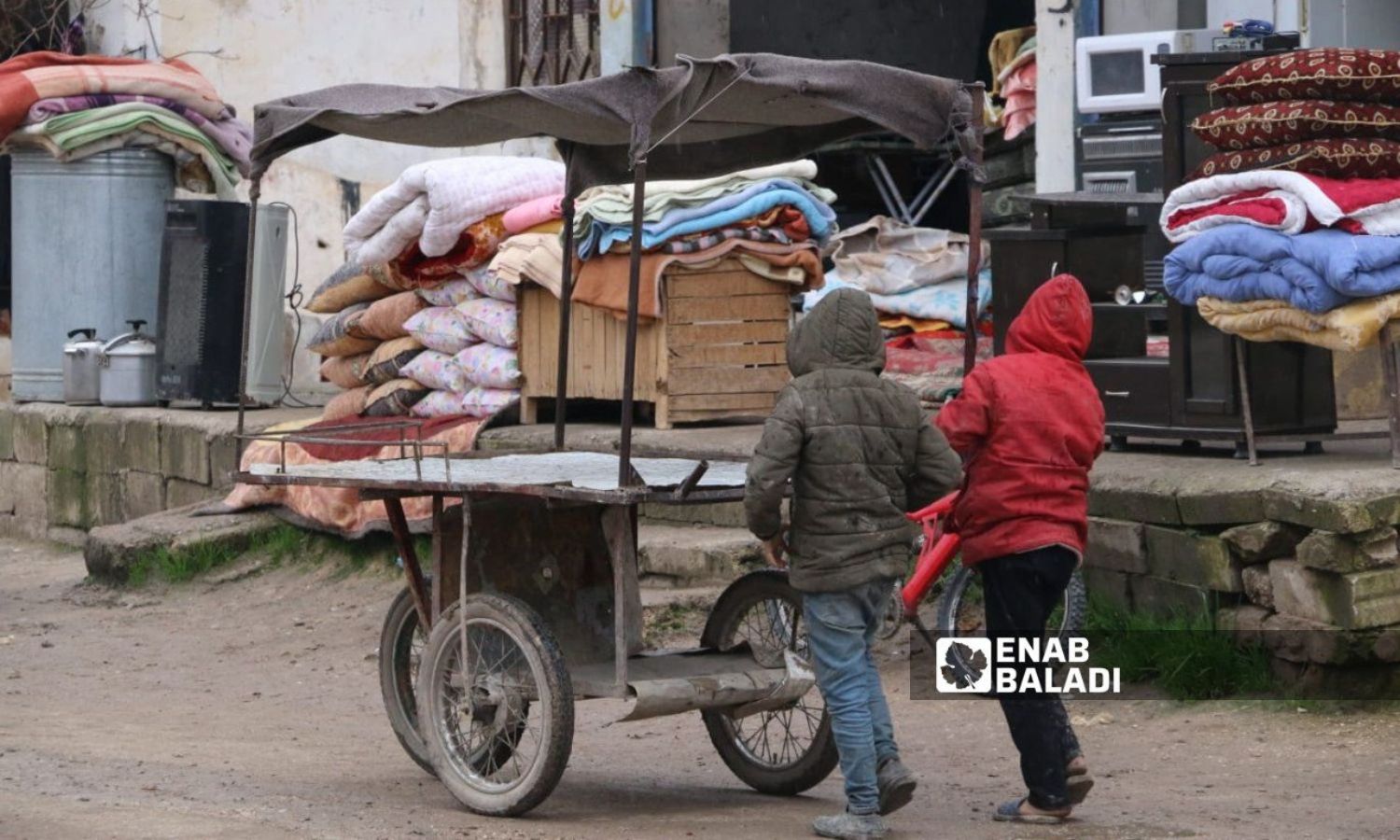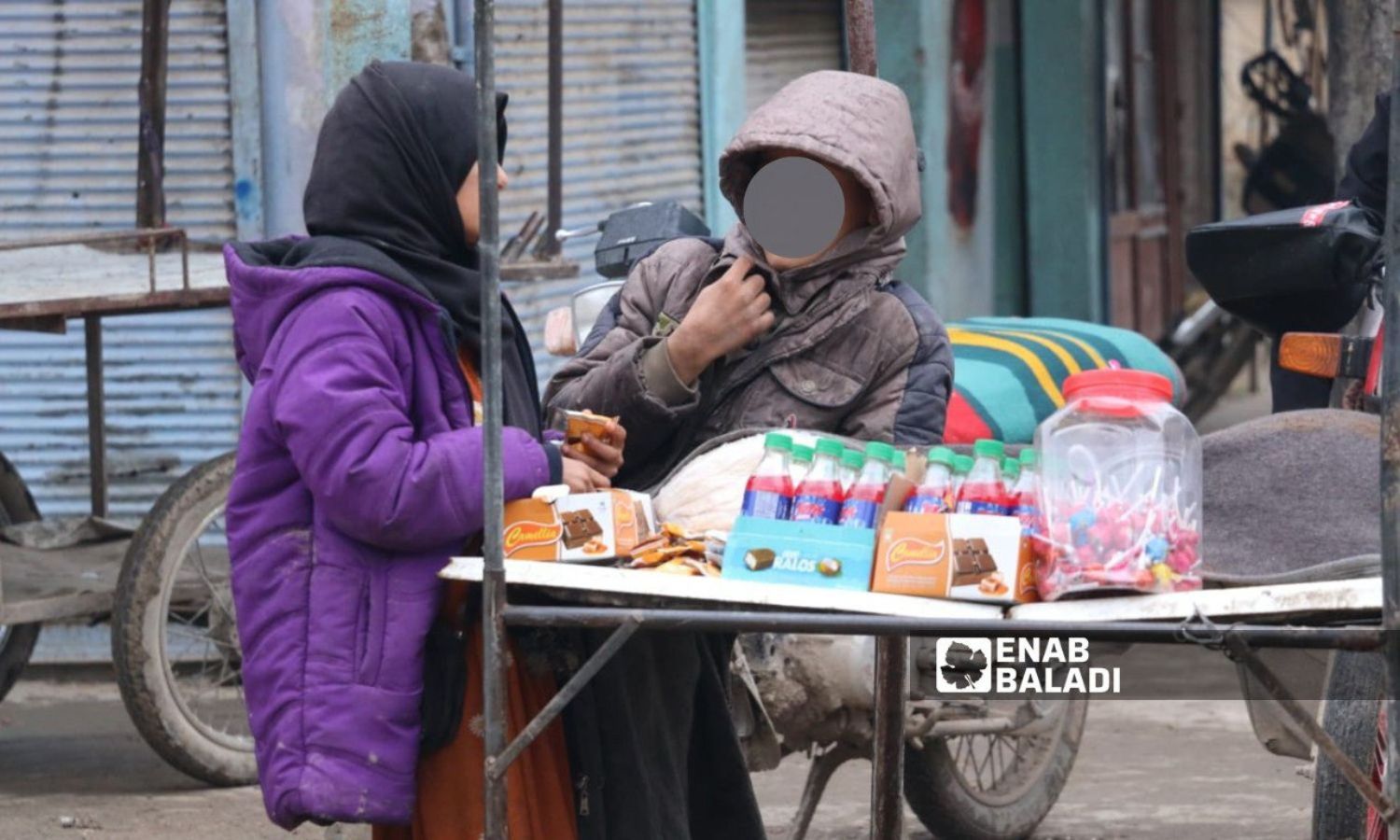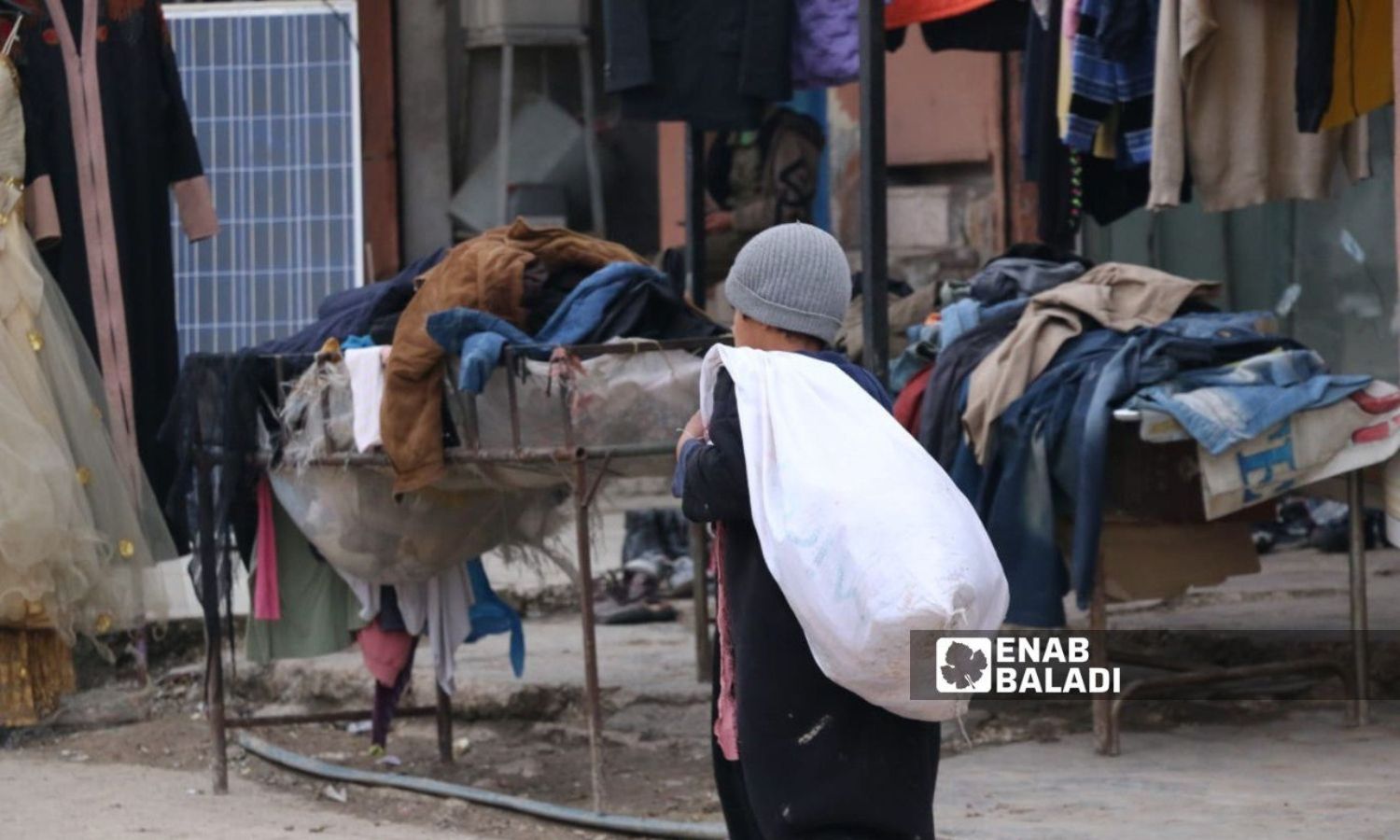



In the market of Ras al-Ain city, stands Mohammad Seif al-Din, a 9-year-old child in front of a small stall selling bread, helping his mother with bread sales, wearing torn clothes and showing clear signs of fatigue.
As one walks through the streets of Ras al-Ain, northwest of al-Hasakah, the phenomenon of child labor is clearly noticeable, ranging from selling at stalls to jobs requiring physical and muscular effort.
Mohammad said he feels very tired and wants to go to school, but his family’s financial circumstances do not permit it. He explained that he needs to work to help his mother secure the family’s daily bread.
Mohammad lost his father in the military operations launched by the regime forces in Eastern Ghouta of Damascus, which turned him into the sole provider for the family along with his mother, to cover the needs of his four siblings.
Child labor is a social problem with negative impacts on children, as it deprives them of their right to education, growth, and play. It also contributes to the spread of poverty, unemployment, and crime.
In another corner of the city stands Malik al-Taie, a 12-year-old child in front of an auto repair shop, where he works under harsh conditions that combine cold and fatigue, without different motivations for work than those of Mohammad.
Malik explained to Enab Baladi that his father suffers from quadriplegia due to a car accident, rendering him unable to work, so the son has taken on the father’s role, working daily from 7 am to 6 pm (11 hours a day) to secure bread, vegetables, and the simplest daily life needs.

Children working on buying scrap metal on an old cart in Ras al-Ain, northwest of al-Hasakah – January 16, 2024 (Enab Baladi)
Adnan al-Farid (54 years old), displaced from the city of Homs, is the father of two children whom he sets to work on a stall selling breadsticks, while he himself works in the al-Hal popular market. However, the weekly wage he earns is not enough to cover the basic needs of his family.
Al-Farid set up the stall for his children to sell breadsticks daily from early morning until after midday, despite his belief in the harm of child labor. However, he has no other options under his economic circumstances, as he told Enab Baladi.

A boy and a girl working in selling sweets in Ras al-Ain, northwest of al-Hasakah – January 16, 2024 (Enab Baladi)
In turn, lawyer Farhan al-Saadoun pointed out that child labor in Ras al-Ain is a problem with negative effects on both children and society, emphasizing the need to take necessary measures to counteract this problem and protect children from its impacts.
Al-Saadoun added that Syrian law sets the legal working age at 15 years and prohibits the employment of children in dangerous work or work that harms their health or education. Nevertheless, enforcement of this law is weak, which contributes to the spread of child labor.
He also mentioned that there are reasons that push children to work in Syria, regardless of the areas of control, including the difficult economic situation, social factors, and weak laws and legislation.

A child works in collecting and selling cardboard in Ras al-Ain, northwest of al-Hasakah – January 16, 2024 (Enab Baladi)
The official spokesperson for the local council, Ziad Malki, told Enab Baladi that about 3,000 children are out of the educational system in Ras al-Ain. This is due to several reasons, including displacement, war, the geographic constrictions of the area, a lack of job opportunities, and complete reliance on the agricultural sector.
Malki explained that the council is working on taking measures to address this phenomenon, including intensifying awareness campaigns about child labor, enhancing the importance of education, along with providing financial support to economically vulnerable families and creating job opportunities for the population.
According to a report by the United Nations Children’s Fund (UNICEF), released on January 24, about 2.4 million children are out of school in Syria.
On the occasion of the International Day of Education, the organization added that the statistic covers all regions of Syria.
The number of children out of school represents about half of the school-age children, totaling 5.52 million children.
The children out of school range in age from 5 to 17 years old.
The annual report issued by the Syrian Network for Human Rights on January 16 highlighted the ongoing violations against children, their deprivation of education, and the targeting of educational facilities.
It mentioned that the armed conflict has stolen the childhood of an entire generation or more, stressing that the protection of children’s rights and ensuring their access to education and meeting their psychological needs are vital for the future of Syria.
if you think the article contain wrong information or you have additional details Send Correction